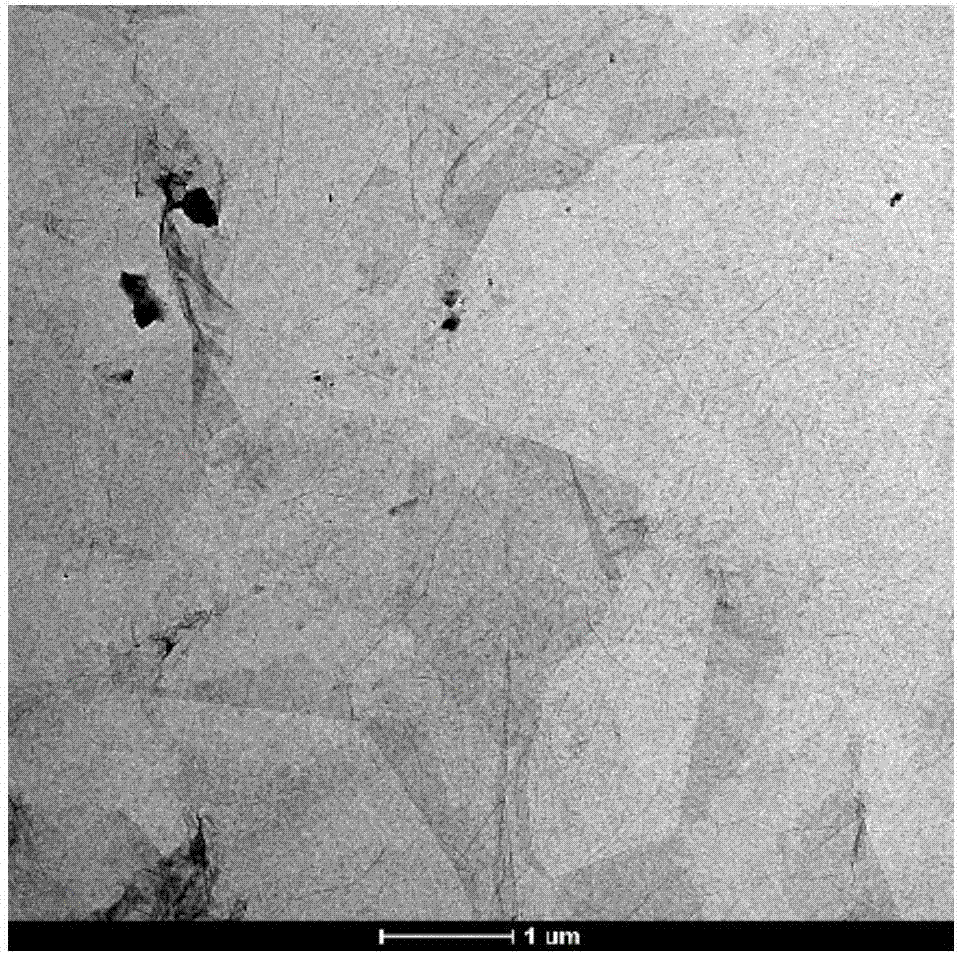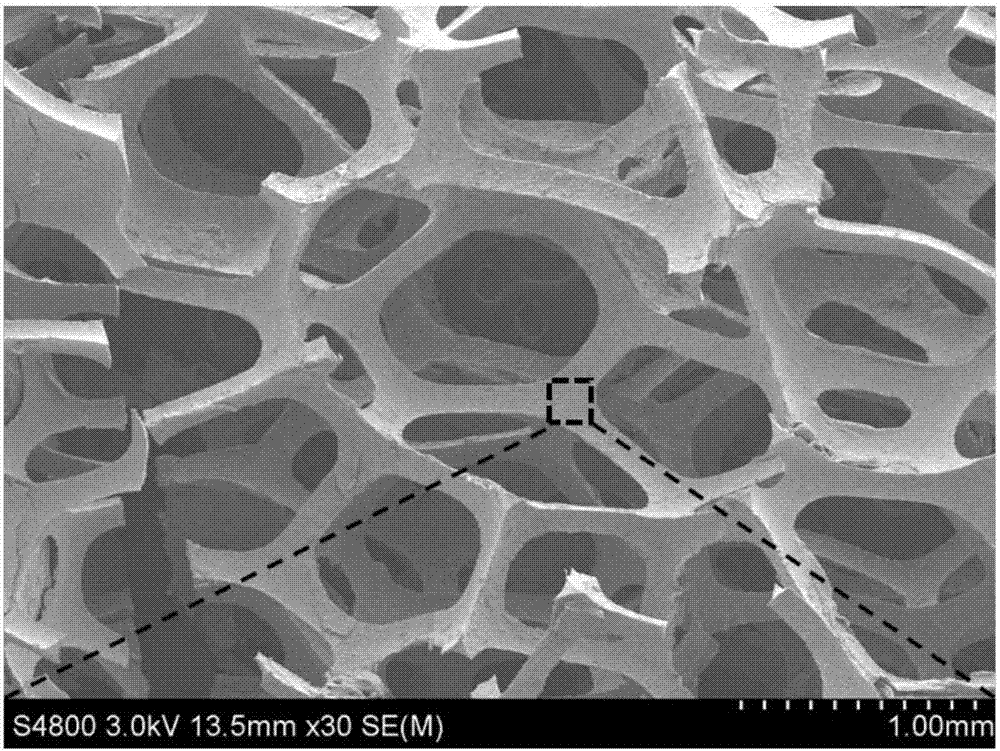Preparation method of polymer foam-based multi-stage carbon nanocomposite pressure-sensitive material
A technology of carbon nanocomposite and pressure-sensitive materials, which is applied in the field of preparation of polymer foam-based multi-level carbon nanocomposite pressure-sensitive materials, can solve problems such as complex procedures, high requirements, and high costs, and achieve strong operation controllability and quality Lightweight, low-cost effect
- Summary
- Abstract
- Description
- Claims
- Application Information
AI Technical Summary
Problems solved by technology
Method used
Image
Examples
preparation example Construction
[0024] A method for preparing a polymer foam-based multi-stage carbon nanocomposite pressure-sensitive material of the present invention, specifically comprising the following steps:
[0025] Step 1, dispersing graphene oxide (GO) into deionized water, and ultrasonically dispersing to obtain a negatively charged graphene aqueous dispersion;
[0026] The graphene oxide concentration in the graphene oxide aqueous dispersion in step 1 is 1.5-6 mg / mL.
[0027] Step 2, using γ-aminopropyltriethoxysilane (AMEO) in a toluene solvent protected by a nitrogen atmosphere at 60-100°C for 12-24 hours under reflux reaction to carry out surface modification of hydroxylated carbon nanotubes (CNT-OH) Silane, centrifugally washed and freeze-dried, the obtained aminosilane-modified carbon nanotubes (AMEO-CNTs) were dispersed in deionized water, and hydrochloric acid solution was added dropwise to adjust the pH to 5-6 to obtain positively charged aminosilane-modified carbon nanotubes tube (AMEO-...
Embodiment 1
[0036]Weigh 0.045g graphene oxide (GO) and disperse it into 30mL deionized water, and ultrasonically disperse to obtain a negatively charged GO aqueous dispersion with a concentration of 1.5mg / mL; reflux reaction in toluene solvent at 60°C for 12 hours to modify the surface of hydroxylated carbon nanotubes with aminosilane, centrifuge washing and freeze-drying to obtain aminosilane-modified carbon nanotubes; weigh 0.045g of aminosilane-modified carbon nanotubes and disperse them into 30mL In deionized water, add hydrochloric acid solution to adjust the pH to 5 to obtain a positively charged aminosilane-modified carbon nanotube aqueous dispersion with a concentration of 1.5 mg / mL; immerse the polyurethane sponge in the graphene (GO) aqueous dispersion and gently Squeeze repeatedly, take it out after saturation, and dry it in an oven at 90°C; immerse the dried polyurethane sponge-based graphene (GO) composite material in the aqueous dispersion of aminosilane-modified carbon nanot...
Embodiment 2
[0038] Weigh 0.09g graphene oxide (GO) and disperse it into 30mL deionized water, and ultrasonically disperse to obtain a negatively charged GO aqueous dispersion with a concentration of 3.0mg / mL; Hydroxylated carbon nanotubes were surface-modified with aminosilane at 100°C for 24 hours in toluene solvent, washed by centrifugation and freeze-dried to obtain aminosilane-modified carbon nanotubes; weigh 0.09g AMEO-CNTs and disperse them into 30mL deionized water, drop Add hydrochloric acid solution to adjust the pH to 5, and obtain a positively charged AMEO-CNTs aqueous dispersion with a concentration of 3.0mg / mL; immerse the polyurethane sponge in the GO aqueous dispersion and squeeze it gently repeatedly, and take it out in an oven at 60°C after saturation Drying; the dried polyurethane sponge-based GO composite material was immersed in the AMEO-CNTs aqueous dispersion and squeezed repeatedly, and after saturation, it was taken out and dried in an oven at 90°C to obtain a layer...
PUM
| Property | Measurement | Unit |
|---|---|---|
| concentration | aaaaa | aaaaa |
| density | aaaaa | aaaaa |
| density | aaaaa | aaaaa |
Abstract
Description
Claims
Application Information
 Login to View More
Login to View More - R&D
- Intellectual Property
- Life Sciences
- Materials
- Tech Scout
- Unparalleled Data Quality
- Higher Quality Content
- 60% Fewer Hallucinations
Browse by: Latest US Patents, China's latest patents, Technical Efficacy Thesaurus, Application Domain, Technology Topic, Popular Technical Reports.
© 2025 PatSnap. All rights reserved.Legal|Privacy policy|Modern Slavery Act Transparency Statement|Sitemap|About US| Contact US: help@patsnap.com



